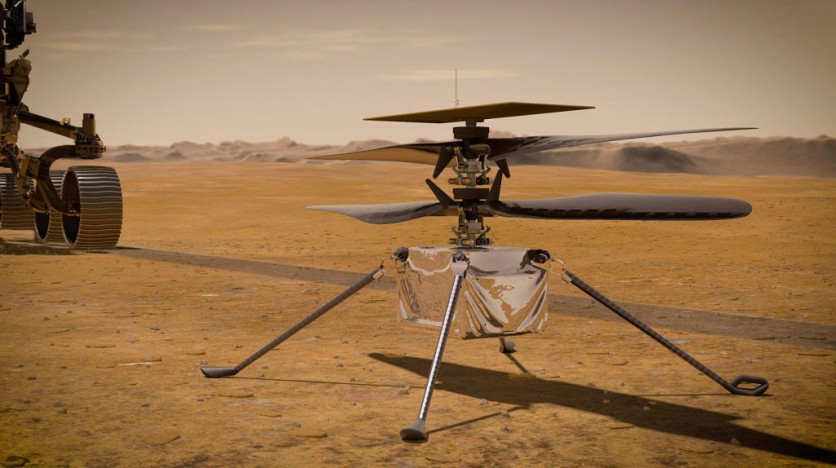NASA's Ingenuity helicopter has completed its 14th and 15th flights over the past two weeks. A new video of this aerial robot has surfaced online following its journey to Mars.
The short footage showed how it flies for a 23-second hang-time. Besides the October flight, let's also take a look at how the vehicle performed during its most recent trip.
Ingenuity Helicopter on 14th Flight

According to a report by Space.com, the Mars helicopter has managed to stay afloat at 16 feet high and even move on its side before it landed on the red planet.
The space website included in its report the video footage of the 14th light on the Martian surface. The space robot has undergone a series of rapid spins which are unusual compared to its previous journeys.
The 14th trip took place on Sunday, Oct.24. Scientists considered its duration to be shorter than before. They even tested if the drone could survive the harsh weather conditions on the planet, especially the thin air that it has.
The space agency's Jet Propulsion Laboratory indicated that the rotor requires 2,700 revolutions per minute (rpm). Before, it only hit 2,537 rpm. This condition was needed because of the thinning atmosphere on Mars.
So far, the team witnessed the success of the flights and even planned to continue its space mission in the future. As it explores the Jezero Crater, the scientists also get to study the composition of rocks around the region.
Originally, the 14th trip was scheduled on Sept.18, but due to problems during early tests, the team decided to move it to a later date. NASA conducted a thorough study because of the solar conjunction that could affect communication lines on the planet.
Ingenuity Helicopter's 15th Flight
Slash Gear reported on Monday, Nov.8 that flight 15 for the Mars ingenuity helicopter took place on Saturday, Nov.6. At the time of writing, the team expected a 130-second flight at 1,333 feet.
Moreover, the team has snapped high-quality images of the Martian robot that will be sent to Earth after the journey. The helicopter is said to be traveling at 11.1 mph.
According to the report, the 15th flight is the second flight for the said vehicle during the summertime on Mars. It gets challenging because of lower air density and it poses a lot of struggle for the scientists.
All in all, the Ingenuity helicopter has already captured 83 13 MP color photos. The black-and-white images are 1,772 at the moment.
NASA Mars Curiosity Rover Discovers Organic Molecules
Earlier this month, Tech Times reported that the team has discovered something on its soil samples. The organic molecules were found out to be present in the specimen.
The error was on the team's end. They placed the sample in a cup which was once a container of a chemical cocktail. The correct approach was to put it in an empty container.
Meanwhile, China announced in September that it will develop a Mars helicopter-like helicopter. Along with the confirmation about its space venture, it also plans to launch its first crewed mission in 2033.
Related Article: NASA's Ingenuity Helicopter Completes 12th Flight on Mars
This article is owned by Tech Times
Written by Joseph Henry
ⓒ 2025 TECHTIMES.com All rights reserved. Do not reproduce without permission.




